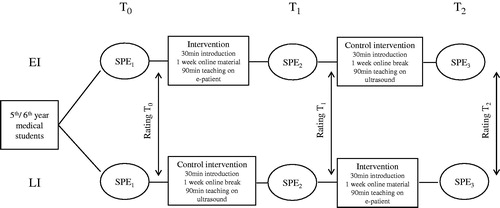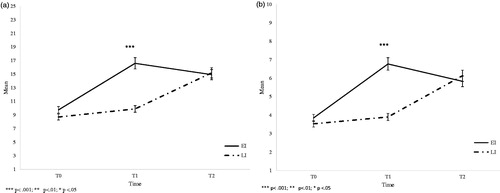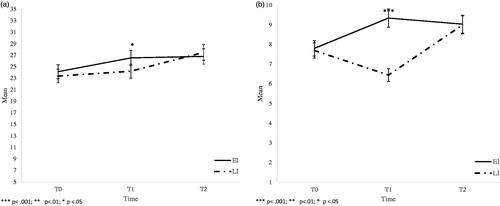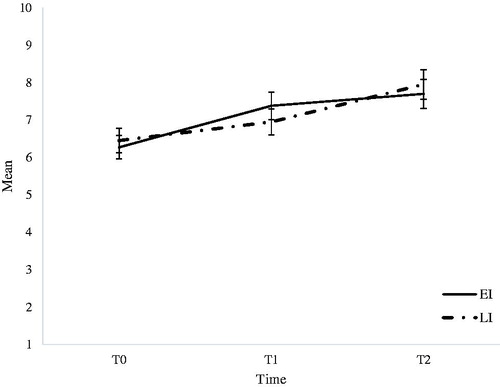Figures & data
Figure 1. Study design. EI = early intervention group, LI = late intervention group, SPE = Simulated patient encounter. Rating: T0–T2 binary checklist and global item by 2 video raters, JSPPE (Jefferson scale of patient perception of physician empathy) and global item by SP, global item by students. T1 (EI) and T2 (LI) additionally course evaluation by students.

Figure 2. (a) Video rater: binary rating of competency. EI: early intervention; LI: late intervention. (b) Video rater: global rating of competency. EI: early intervention; LI: late intervention.



